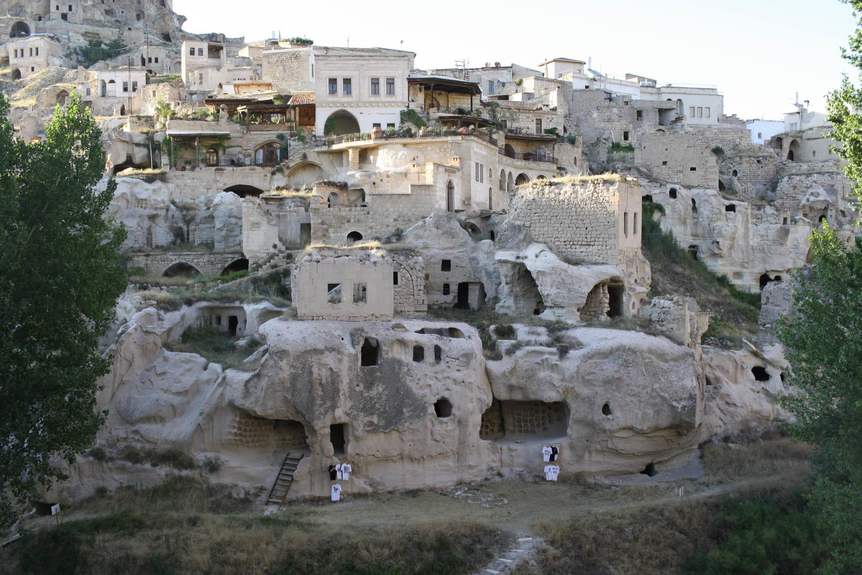
R
E
V N
E
X
T
For thousands of years, humans have carved into the soft volcanic rock of the Cappadocia region in central Anatolia to make their homes. The region became an early center of Christianity, and churches were built deep underground or high inside the cliffs, protecting them against Roman and later Arab and Seljuk armies. The Cappadocian hilltop village of Ortahisar and the Balkanderesi Valley below—where many people still lived in cliff-side cave homes until 50 years ago—was the setting for the Cappadox festival’s contemporary art program. Curated by Fulya Erdemci (who was the curator of the Istanbul Biennial in 2013, among other roles) with Ilgın Deniz Akseloğlu, the exhibition “Sessizlik (Silence)” utilized caves of the valley and spaces in the village for projects by 17 artists, each working with the different histories of the place and region. The idea of silence was widely interpreted and applied, from projects that looked at the long history of hidden Christian communities and their relocation in 1923 population exchanges with Greece, to the killing of young women in Turkey, and even recent histories like those told by a young, deaf boy who recounts his experience fleeing Syria. ArtAsiaPacific will publish a review of “Sessizlik/Silence” written by curator Adnan Misal Yıldız in our Sep/Oct issue. Until then, here’s quick a look around the projects of Cappadox, which ran until July 9.
HG Masters is editor-at-large of ArtAsiaPacific.
To read more articles by ArtAsiaPacific, visit our Digital Library.



